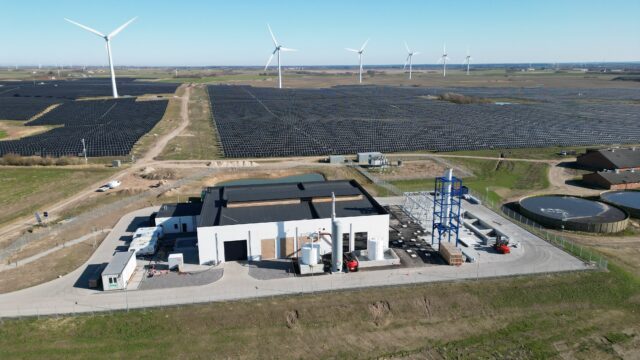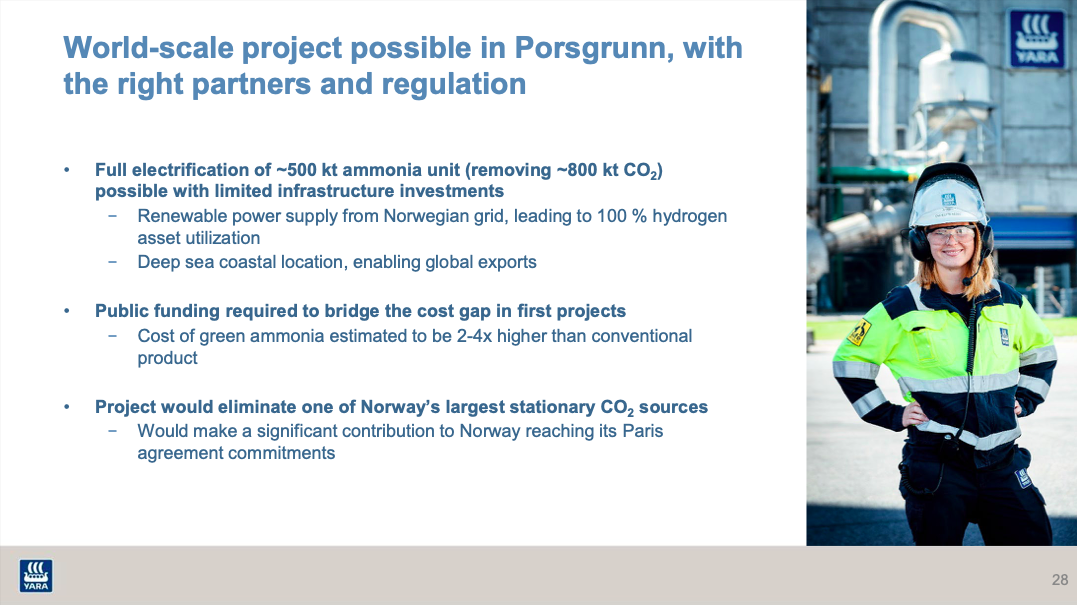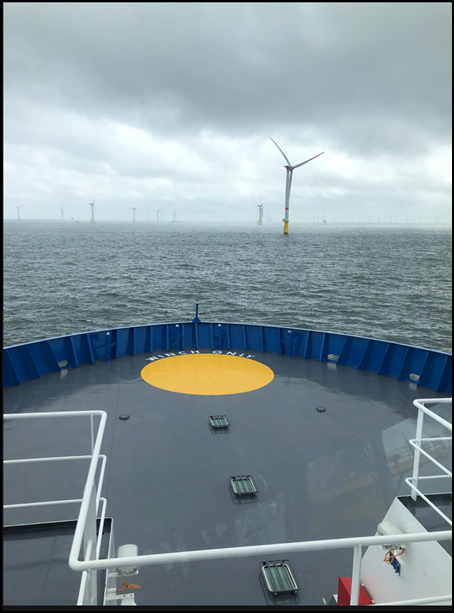The trio has inaugurated their “dynamic” renewable ammonia plant in Ramme, Denmark. The facility aims to demonstrate cost-effective, fluctuating ammonia production based on variable power inputs.
Content Related to Vestas
Article
Topsoe, Skovgaard, Vestas open dynamic ammonia plant in Denmark
Julian Atchison August 30, 2024
Article
Project Catalina: GW-scale green ammonia in Spain
Julian Atchison February 02, 2022
Copenhagen Infrastructure Partners, Fertiberia and Vestas will partner with Enagás (who own Spain's national gas grid) & Naturgy (a Spanish gas & electricity utility) to develop a hydrogen and ammonia mega project in the Aragon region, Spain. At full size, 5 GW of combined wind & solar generating capacity will power 2 GW of electrolysers that produce around 160,000 tonnes of green hydrogen per year. Construction of Phase I is due to start at the end of 2023, and includes plans for a state-of-the-art green ammonia production facility that will feed Fertiberia's existing fertiliser plant in Sagunto.
Article
The Ammonia Wrap: 45 GW mega-project in Kazakhstan and more
Julian Atchison June 30, 2021
This week: 45 GW mega-project in Kazakhstan, world-first industrial "dynamic" green ammonia plant, Japan's Idemitsu to use Tokuyama facility for ammonia imports, co-combustion test, more successful funding rounds, green ammonia in Ireland, South Africa's potential to fuel green shipping: new report, Obsky LNG becomes Obsky hydrogen/ammonia and more developments in the Middle East.
Article
Full electrification: Yara plans 500,000 tons of green ammonia in Norway by 2026
Trevor Brown December 10, 2020
Green ammonia projects continue to be announced at dizzying speed and scale. A few weeks ago, Origin Energy disclosed its feasibility study to develop 500 MW (hydro) / 420,000 tons per year of green ammonia in Tasmania, with first production targeted for mid-2020s. This week, a consortium led by Haldor Topsoe and Vestas announced 10 MW (wind+solar) / 5,000 tons of green ammonia in Denmark, which could be operational in 2022, making it the first green ammonia plant at this scale. Also this week, Yara made a significant corporate announcement, detailing a “transformation of its commercial business models, sales channels and offerings,” with the full decarbonization of its Porsgrunn plant at the heart of its strategy to use green ammonia “to enable the hydrogen economy.”
Article
Haldor Topsøe and Partners Issue Ammonfuel Report
Stephen H. Crolius August 20, 2020
Earlier this month Haldor Topsoe and four partners issued Ammonfuel - an industrial view of ammonia as marine fuel. According to the accompanying press release, the 59-page report provides “a comprehensive and up-to-date overview of the applicability, scalability, cost, and sustainability of ammonia as a marine fuel.” The partners include Vestas, Siemens Gamesa, Hafnia, and Alfa Laval.
Article
Green ammonia at oil and gas scale: the 15 GW Asian Renewable Energy Hub
Trevor Brown August 06, 2020
The Asian Renewable Energy Hub will be a 6,500 square kilometer wind and solar farm in Australia's Pilbara desert, producing green ammonia for export beginning in 2027/28. This was recently reported as an investment of AU$ 22 billion (US$ 16 billion). As it says on its website, this is "renewable energy at oil and gas scale." Details recently entered the public domain regarding the project's upstream segment (power generation). Now, its downstream segment (green ammonia production) is coming into focus as well. InterContinental Energy, one of the project backers, represents the Asian Renewable Energy Hub as just one project within its $100+ billion, 50 million ton per year, green ammonia and green methanol production portfolio: "the largest and most advanced portfolio of green hydrogen projects worldwide."
Article
Green ammonia: Haldor Topsoe's solid oxide electrolyzer
Trevor Brown March 29, 2019
Haldor Topsoe has greatly improved the near-term prospects for green ammonia by announcing a demonstration of its next-generation ammonia synthesis plant. This new technology uses a solid oxide electrolysis cell to make synthesis gas (hydrogen and nitrogen), which feeds Haldor Topsoe's existing technology: the Haber-Bosch plant. The product is ammonia, made from air, water, and renewable electricity. The "SOC4NH3" project was recently awarded funds from the Danish Energy Agency, allowing Haldor Topsoe to demonstrate the system with its academic partners, and to deliver a feasibility study for a small industrial-scale green ammonia pilot plant, which it hopes to build by 2025. There are two dimensions to this technology that make it so important: its credibility and its efficiency.






